

New Technologies in Education. Schoooools.com is an online schools community — the schoooools.
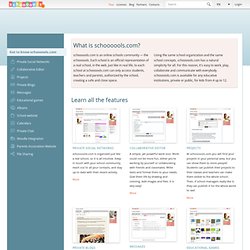
Each school is an official representation of a real school, in the web. Just like in real life, to each school at schoooools.com can only access students, teachers and parents, authorized by the school, creating a safe and close space. Using the same school organization and the same school concepts, schoooools.com has a natural simplicity for all. For this reason, it's easy to work, play, collaborate and communicate with everybody. schoooools.com is available for any educative institutions, private or public, for kids from 4 up to 12. Private Social Networksschoooools.com is organized just like a real school, so it is all intuitive.
Moodle IntegrationHaving both schoooools.com and Moodle doesn't have to be hard. Teachers' perceptions of the barriers to technology integration and practices with technology under situated professional development. Teacher value beliefs associated with using technology: Addressing professional and student needs. Smart Gamification: Seven Core Concepts for Creating Compelling Experiences. Meaningful Play: Getting Gamification Right. Tammy Morris' portaportal. Levels of Use. Adapted from C.
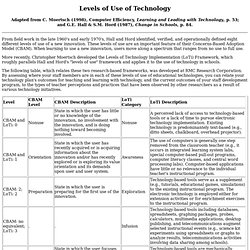
Moertsch (1998), Computer Efficiency, Learning and Leading with Technology, p. 53; and G.E. Hall & S.M. Hord (1987), Change in Schools, p. 84. From field work in the late 1960's and early 1970's, Hall and Hord identified, verified, and operationally defined eight different levels of use of a new innovation. These levels of use are an important feature of their Concerns-Based Adoption Model (CBAM). More recently, Christopher Moertsch developed the Levels of Technology Implementation (LoTi) Framework, which roughly parallels Hall and Hord's "levels of use" framework and applies it to the use of technology in schools. The following table, which relates these two research-based frameworks, was developed at RMC Research Corporation.
The Back End of Gamification in our 1:1 Professional Development. I have posted several previous blogs on my model for gamification in our professional development.
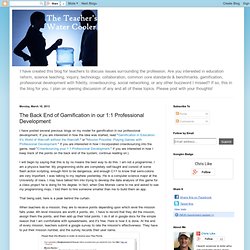
If you are interested in how the idea was started, read "Gamification in Education: It's World of Warcraft without the Warcraft. " or "Mission Possible: Playing Games with Professional Development. " If you are interested in how I incorporated crowdsourcing into the game, read "Crowdsourcing your 1:1 Professional Development. " If you are interested in how I keep track of the points on the back end of the system, continue reading on:) I will begin by saying that this is by no means the best way to do this. I am not a programmer, I am a physics teacher. That being said, here is a peak behind the curtain. When teachers do a mission, they are to receive points depending upon which level the mission falls under. 4th level missions are worth 4 points, etc.
Mission Possible: Playing Games with Professional Development. A few posts ago, I talked a bit about Gamification in education.
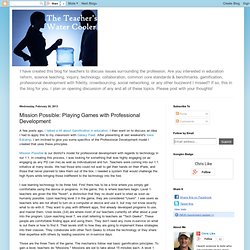
I then went on to discuss an idea I had to apply this to my classroom with Galaxy Fleet. After presenting at last weekend's Iowa Edcamp, I am inclined to give you some specifics of the Professional Development model I created that uses these principles. Mission Possible is our district's model for professional development with regards to technology in our 1:1. In creating this process, I was looking for something that was highly engaging (or as engaging as any PD can me) as well as individualized and fun. Teachers were coming into our 1:1 initiative at many levels. I see learning technology to be three fold.
Those are the three Tiers of the game. Here is the website for the Game. You will not be able to see the leaderboard, which we do post so everyone knows where they stand. I can tell you that this posting of the leaderboard is a key to the game aspect of it. I encourage you to develop your own game based on this model. Technology Integration Matrix. Apps in Education. Free Technology for Teachers. Alpha for Educators. How Common Core Standards Mesh With Education Technology. If you’re a teacher in the US, you’ve surely heard of the Common Core Standards , the national academic standards for K-12 schools.
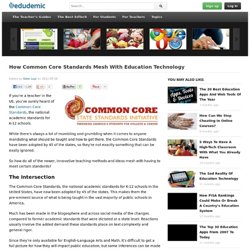
While there’s always a lot of mumbling and grumbling when it comes to anyone mandating what should be taught and how to get there, the Common Core Standards have been adopted by 45 of the states, so they’re not exactly something that can be easily ignored. So how do all of the newer, innovative teaching methods and ideas mesh with having to meet certain standards? The Intersection The Common Core Standards, the national academic standards for K-12 schools in the United States, have now been adopted by 45 of the states. This makes them the pre-eminent source of what is being taught in the vast majority of public schools in America.
Much has been made in the blogosphere and across social media of the changes compared to former academic standards that were dictated at a state level. The Common Core Standards - W= Writing - RI= Reading: Informational. Apps in Education. Lessonopoly.